Did you know that over 50% of motorcycle breakdowns are linked to poor tire maintenance? This easily preventable issue leads to expensive repairs and, more importantly, puts your safety at risk every time you ride. Understanding and practicing proper tire maintenance for motorcycles not only saves you money but ensures every journey is smooth and incident-free. In this comprehensive guide, you’ll discover how routine tire care is your first line of defense against unexpected blowouts, costly damage, and hazardous riding conditions.
Startling Facts About Tire Maintenance for Motorcycles and Preventable Failures
"It’s estimated that over 50% of motorcycle breakdowns are linked to poor tire maintenance—an easily avoidable risk with routine checks and care."
Motorcycle tires are a rider’s only contact point with the road, yet they are often overlooked in regular maintenance routines. Tire maintenance is not simply about extending the life of your tires; it is a cornerstone of rider safety and performance. Countless accidents and sudden tire failures can be traced back to issues like improper tire pressure, uneven tread depth , or unnoticed wear and tear —all preventable with consistent inspection and care. These are not isolated incidents: industry research shows neglected tire maintenance is a primary reason behind tire blowouts and loss of control, often resulting in costly damages and avoidable injuries.
Taking simple, proactive steps—like regularly checking tire pressure, inspecting the sidewall of the tire for cracks, and monitoring tread wear indicators —can dramatically reduce your risk of breakdowns and keep your motorcycle tires in top condition . The good news? These habits are easy to adopt and invaluable for both everyday riders and enthusiasts alike. So, let’s dig into why regular tire checks could be the smartest maintenance routine you add to your riding checklist.
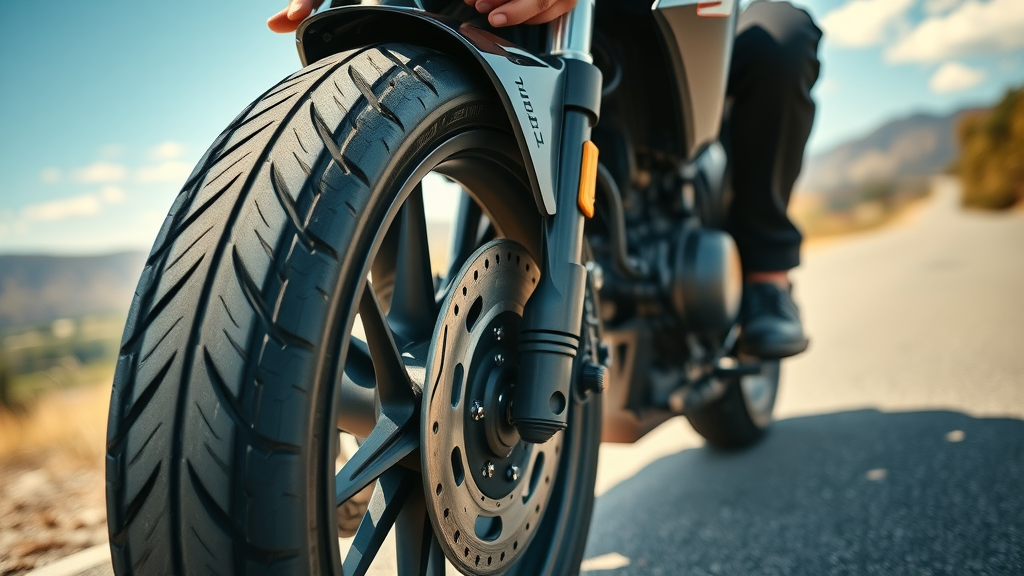
Why Tire Maintenance for Motorcycles is Vital: Safety, Longevity, and Performance
When it comes to motorcycle tire maintenance , every rider’s ultimate goals are safety , prolonged tire life , and consistent performance . Tires that are properly inflated and regularly inspected offer a much better grip on various surfaces, reducing the risk of skidding or sudden loss of control—especially at high speeds or during wet weather. Equally important, diligent tire maintenance ensures a smoother, more controlled ride by minimizing uneven wear, flat spots, or unpredictable handling.
Overlooking basic tasks such as monitoring tread depth or using the correct tire size for your bike model can lead to dangerous conditions or accelerate tire wear. Inadequate care increases the likelihood of experiencing a tire failure at the worst possible moment, endangering both the rider and others on the road. In contrast, regular tire checks add years to your tire’s lifespan, optimize fuel consumption , and help maintain the intended performance characteristics engineered into your motorcycle.
To clarify how crucial these steps are, let’s break down common motorcycle tire maintenance tasks alongside the consequences of neglect, so you see just how much is riding on your attention:
| Maintenance Task | Benefits | Neglect Consequence |
|---|---|---|
| Check tire pressure | Improved safety, longer tire life | Increased blowout risk |
| Monitor tread depth | Enhanced grip, reduces skidding | Loss of traction/wear and tear |
| Inspect for wear and tear | Early issue detection | Sudden failures, unsafe riding |
| Correct tire size | Stable handling | Unpredictable performance |
Comprehensive Guide: Tire Maintenance for Motorcycles
Routine tire maintenance for motorcycles is a process every rider should approach methodically. Start with a thorough inspection—visually and manually—of each tire, paying special attention to the presence of embedded debris, surface cracks, or flat spots . Next, check tire pressure using an accurate gauge at least every couple of weeks, making sure your readings align with manufacturer recommendations for both front tire and rear tire .
Measuring tread depth is equally vital: use a tread depth gauge on several points around the tire to detect any uneven wear patterns or reach the legal minimums. When assessing wear and tear , look for visible cords, sidewall of the tire bubbles, or signs of dry rot—any of which indicate it’s time for outright replacement. Always confirm you’re using the proper tire size for your bike model, as incorrect sizing affects stability and can accelerate uneven wear. Finally, monitor your tire replacement intervals and keep a watchful eye for changes in your bike’s handling that could signal hidden tire issues.
- Inspecting motorcycle tires: visual and manual checks
- Checking tire pressure: methods and frequency
- Measuring tread depth: when and how
- Identifying and addressing wear and tear
- Ensuring correct tire size for your motorcycle
- Tire replacement intervals and what to watch for
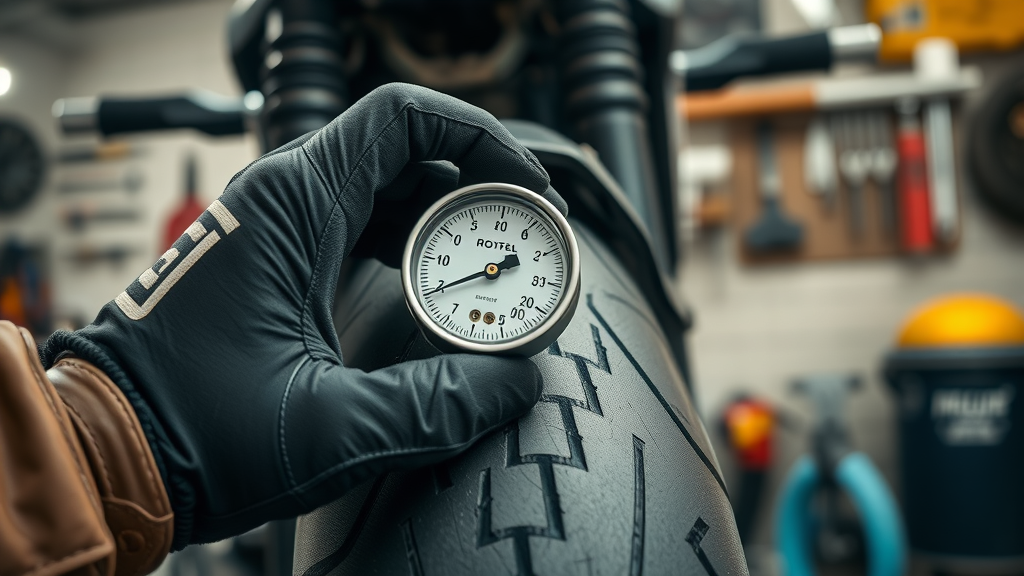
Tire Pressure and Motorcycle Tire Maintenance: Best Practices
Maintaining proper tire pressure is one of the easiest yet most effective tire maintenance steps. Both overinflation and underinflation can have severe impacts—from reducing tire grip and increasing fuel consumption to causing irreversible damage and elevating the risk of a sudden tire failure . Make it a habit to inspect your tire pressure regularly, as even minor changes in temperature or riding style can cause fluctuations.
When checking your tires, always use a quality gauge to ensure accuracy, and adjust inflation to align with the speed rating and load requirements specified for your bike model. Never overlook these seemingly small details: a tire just a few PSI above or below the recommended level may react unpredictably at high speed or under heavy braking, putting a safe ride at stake. Investing in a portable pressure gauge and learning how to use it properly will pay dividends for your bike’s performance and your safety.
How to Check and Maintain Tire Pressure for Motorcycle Tires
"Riding with underinflated motorcycle tires can increase fuel consumption by up to 5%—and drastically decrease your bike’s safe handling capabilities."
Start tire pressure maintenance by letting your motorcycle sit for several hours—measuring pressure on cold tires yields the most reliable readings. Remove the valve cap and use your gauge to record the pressure of both front tire and rear tire . Refer to the owner’s manual or the info sticker on your bike for the proper PSI for your tire size and type. If the pressure is too low, add air in small increments, checking the gauge after each addition. For overinflation, release small amounts of air until you’re within the optimal range.
Remember: tires regularly lose small amounts of pressure, so add this check to your pre-ride routine. Riding with balanced tire pressure improves traction, supports comfortable handling, and minimizes uneven tread wear, ultimately extending the life of your motorcycle tire .
Tread Depth and Wear and Tear: Identifying When Motorcycle Tire Replacement is Needed
Proper monitoring of tread depth and signs of wear and tear are critical for motorcycle safety and top tire performance. Consistent tread depth across the tire provides necessary grip during acceleration, braking, and cornering—especially on wet or slippery surfaces. Once your tread diminishes below 2/32", the risk of tire failure , skidding, or hydroplaning increases substantially, making tire replacement an urgent matter.
Wear and tear come in many forms: check for uneven patches in the tread pattern, exposed cords, bulges on the sidewall of the tire , or visible cracks. These are telltale signs the structural integrity of your motorcycle tires has been compromised. Replacing tires at the first sign of danger is the only way to guarantee a safe ride , so never hesitate if any of these symptoms arise. Remember, preventative action is always less costly than repairs after a blowout.
How to Spot Wear and Tear on Motorcycle Tires
- Uneven tread patterns
- Visible cords or sidewall bubbles
- Tread depth less than 2/32"
- Dry rot or cracking on sidewalls
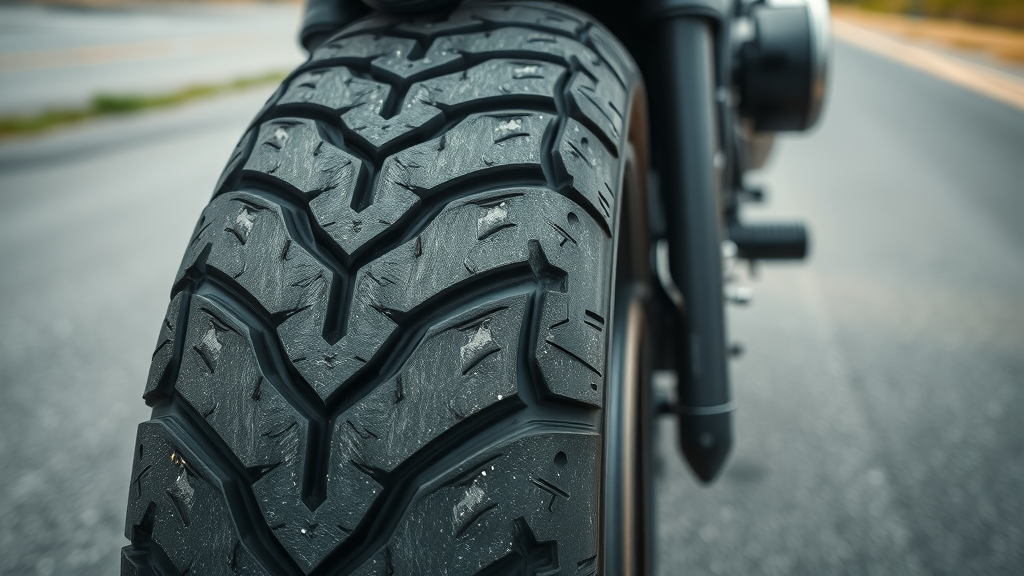
If you notice any of these symptoms on your tires, schedule an inspection as soon as possible. Ignoring the warning signs for tread wear , dry rot, and bubbles can result in dangerous sudden tire failures . Routinely monitoring your tread depth and acting quickly at the first signs of irregularity will preserve your motorcycle tire investment—and more importantly, your safety.
Determining Correct Tire Size and Ensuring Rear Tire Safety
Selecting the right tire size is essential to achieving reliable, stable handling and avoiding sudden performance issues. The wrong size (or ignoring speed and weight ratings) can strain the rear tire , particularly on powerful or heavily loaded bikes. Consult your owner’s manual or a reputable dealer to match tire size not only to your bike model but also to your typical riding style .
Using a larger or smaller rear tire than recommended can create unpredictable behavior during acceleration and high-speed riding, put excessive wear on the sidewall of the tire , and increase the risk of a sudden tire failure . It’s equally important to pay attention to both speed rating and load capacities—going beyond safe limits can lead to blowouts or rapid tire degradation.
Understanding Rear Tire Requirements and Load Matching
For riders who frequently carry passengers or cargo, ensuring the rear tire matches your bike’s load specifications is critical. Always check the sidewall for the correct speed rating and weight rating. If you mount tires without regard to these engineering requirements, you risk instability and rapid, uneven tread wear , making even a short trip hazardous. Adhering to proper tire sizing, inflation, and load guidelines helps guarantee your motorcycle tires deliver dependable traction and handling, every mile.
Proactively investing in the right tire size for your motorcycle isn’t just about performance—it’s a foundational element of motorcycle tire maintenance . This attention to detail ensures you’ll enjoy a safe ride and avoid the hidden dangers of poor tire selection.
Scheduling Tire Maintenance for Motorcycles: Checklists and Intervals
Establishing a scheduled approach to tire maintenance for motorcycles boosts your odds of catching problems before they become dangerous or expensive. A tire maintenance calendar helps you track routine checks, from tire pressure to full tire replacement . As a rule of thumb, integrate these checks with other routine maintenance tasks—such as oil changes—to make your inspection process efficient and foolproof.
Below is a recommended schedule that balances attentiveness with practicality, ensuring your tires remain in top condition and supporting your safe ride goals. Stick to these intervals to maximize your tire life and reduce the risk of sudden tire failure .
| Task | Minimum Frequency |
|---|---|
| Tire pressure check | Every 1-2 weeks |
| Tread depth check | Monthly |
| Full tire inspection | At every oil change |
| Tire replacement | Every 5,000-12,000 miles |
People Also Ask: Tire Maintenance for Motorcycles
How to maintain motorcycle tires?
To maintain motorcycle tires, perform regular inspections for punctures, cracks, or bulges; check and adjust tire pressure frequently; monitor tread depth ; clean tires to remove debris; and store the motorcycle in a cool, dry place to prevent degradation. Promptly address any signs of wear or damage —from the sidewall of the tire to the tire’s contact patch—to prevent sudden tire failure . Consistent habits mean your motorcycle tires provide safer rides and better performance.
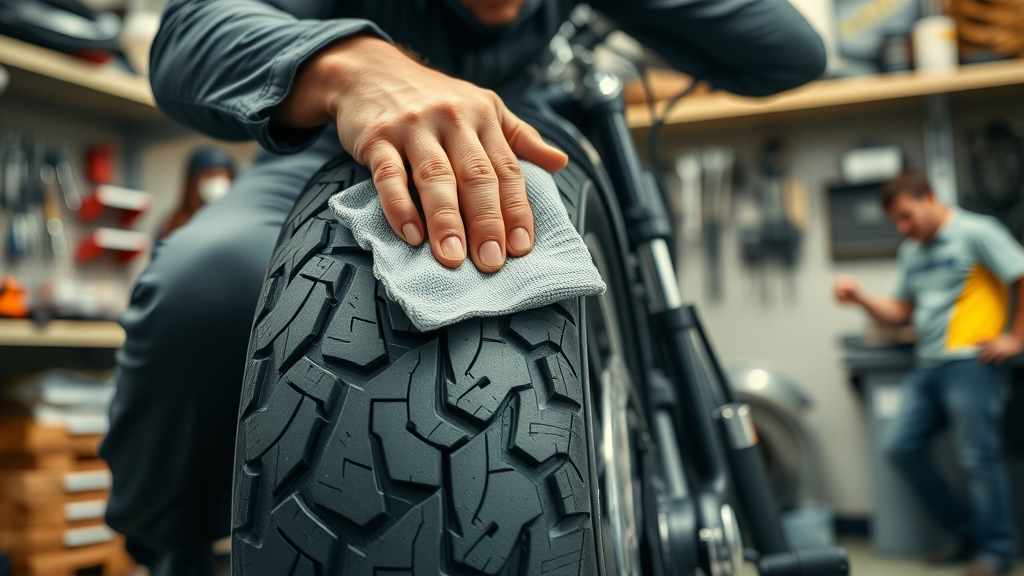
How often are you supposed to change your tires on a motorcycle?
Change motorcycle tires every 5,000 to 12,000 miles , or sooner if there is visible wear , tread depth falls below legal minimums, or if you spot signs of tire damage like dry rot , bulges, or punctures. Frequent riders or those who often ride at high speed may need more frequent tire replacement to maintain a safe ride .
How often do you need to put air in motorcycle tires?
Ideally, check and, if necessary, adjust the air pressure in your motorcycle tires every one to two weeks , since tire pressure can fluctuate with temperature and regular use. Maintaining proper tire inflation supports performance, fuel efficiency, and safety.
How to keep motorcycle tires from dry rotting?
Keep motorcycle tires from dry rotting by storing your bike in a cool, dry environment, using tire covers if the vehicle is outdoors, avoiding prolonged sun exposure, and riding regularly to keep the rubber flexible. Cleaning your tires and keeping them free of chemicals or road salts also helps extend tire life and delays the onset of wear and tear .
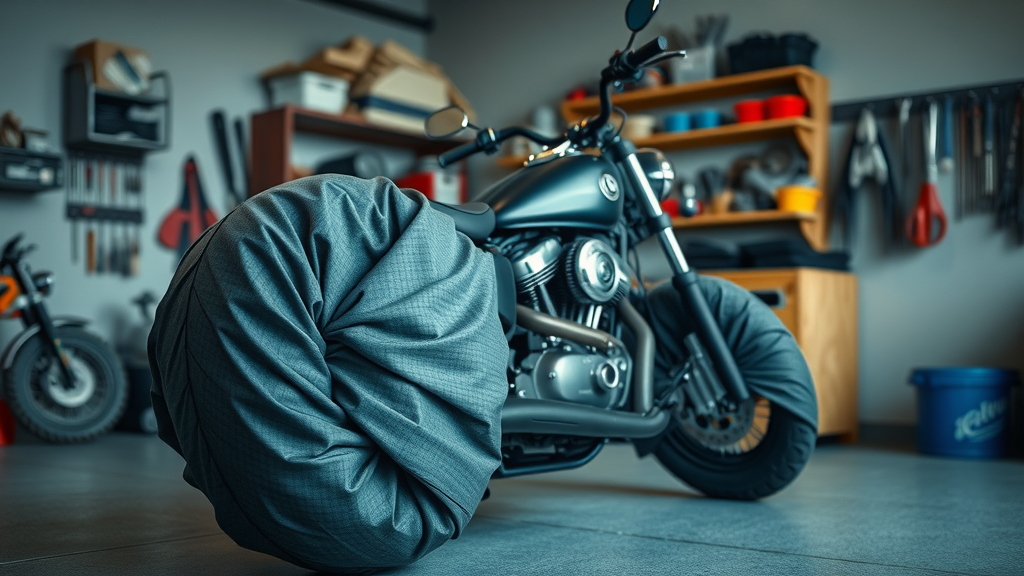
Proactive Tire Maintenance for Motorcycles: Preventative Strategies and Tools
Mastering tire maintenance for motorcycles involves more than routine checks—it also means equipping yourself with the right tools and proactive habits. Invest in a precise tire pressure gauge and a tread depth gauge for accurate measurements. Tire sealants can provide valuable protection against unexpected punctures while on the road, buying you precious time to arrange for a permanent fix.
Keep a written maintenance log, noting every check or change involving your motorcycle tires . This not only helps establish a consistent schedule but also offers insight into patterns of wear and tear , helping you catch small issues before they result in sudden tire failure or unsafe conditions. These simple strategies are the key to maximizing the safety, lifespan, and outright enjoyment of every ride.
- Use a precise tire pressure gauge for accuracy
- Invest in a tread depth gauge
- Consider tire sealants to guard against punctures
- Follow a written motorcycle tire maintenance log
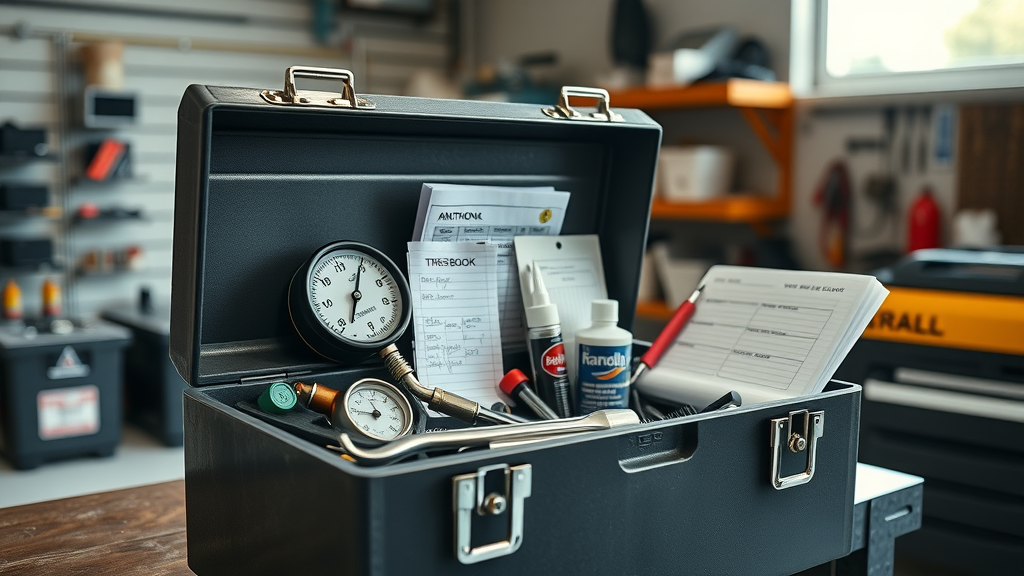
Key Expert Insights on Motorcycle Tire Maintenance and Safety
"No matter your bike’s horsepower, tire maintenance for motorcycles stands as your number one defense against accidents caused by unexpected blowouts or slides."
Experienced riders and mechanics agree: neglect in motorcycle tire maintenance is one of the most frequent pre-cursors to on-road emergencies, whether that’s a minor slip or a major blowout. Regardless of your style—whether you cruise leisurely or push the limits at high speed—consistently checking and maintaining the front tire and rear tire is what prevents your ride from becoming tomorrow’s cautionary tale.
Your best insurance policy is proactive action: check tire pressure before every outing, visually inspect all surfaces for wear and tear , and never gamble with tires that show signs of aging or damage. Experts underscore, time and again, that these habits deliver the best possible defense against sudden tire failure —keeping every ride safe and every mile enjoyable.
Frequently Asked Questions About Tire Maintenance for Motorcycles
- Can you repair a punctured motorcycle tire or should it always be replaced?
- What signs indicate immediate tire replacement?
- How does climate affect tire maintenance for motorcycles?
Can you repair a punctured motorcycle tire or should it always be replaced?
Minor punctures in the tread area can often be repaired using a plug or patch, but if the damage is to the sidewall or if the puncture is large, replacement is the safest course. Always follow manufacturer or professional mechanic advice regarding tire repair versus replacement to avoid the risk of sudden failure.
What signs indicate immediate tire replacement?
Replace your motorcycle tires immediately if you see exposed cords, sidewall bulges, any sign of dry rot or severe cracks, tread depth below 2/32", or if the tire repeatedly loses pressure. Also, change tires if the ride feels unstable or if irregular patterns are visible during your inspection.
How does climate affect tire maintenance for motorcycles?
Hot climates can accelerate the breakdown of rubber compounds, leading to quicker development of cracks, while cold weather lowers tire pressure faster. Humid or wet conditions encourage quicker development of dry rot. Adjust your inspection schedule if you ride or store your bike in extreme climates for maximum safety.
Summary: Tire Maintenance for Motorcycles and Next Steps
- Regular checks of tire pressure, tread depth, and wear and tear are crucial
- Understand tire size requirements for safety
- Replace motorcycle tires as soon as damage or significant wear is identified
- Keep a maintenance schedule to prevent failures and ensure maximum performance
Ready to Master Tire Maintenance for Motorcycles? Call Us Today: 847-458-4858
Take action today: commit to regular tire maintenance for motorcycles , equip yourself with the right tools, and never overlook the signs of trouble. Your best ride starts with safe, well-maintained tires—reach out to our expert team for help or advice at 847-458-4858.
Maintaining your motorcycle’s tires is crucial for safety and performance. For a comprehensive overview, consider reading Wheels & Tires: A Guide to Essential Motorcycle Maintenance , which offers detailed insights into tire pressure, tread depth, and damage inspection. Additionally, Motorcycle Tire Maintenance provides practical advice on tire pressure, tread depth, and overall tire condition. These resources will equip you with the knowledge to keep your motorcycle tires in optimal condition, ensuring a safer and more enjoyable riding experience.
 Add Row
Add Row  Add
Add 



Write A Comment